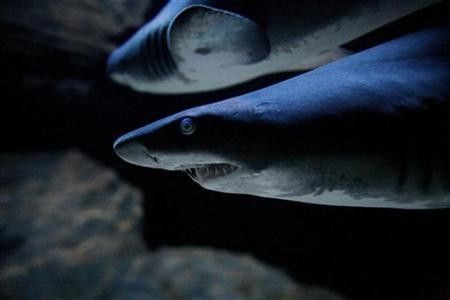Mysterious Sea Monster Eats Huge White Shark: The Truth Revealed

A humongous 9 feet long white shark has reportedly been eaten by a much bigger mysterious sea monster in Western Australia.
"Great White Devoured: Did Megalodon Devour A 9-Foot Great White In Australia?" went as headline of Inquisitr.
"What devoured this great white shark?" CNN cited.
"Godzilla? Huge shark eaten by mystery sea monster, according to scientists," News.com.au's headline read.
The only theory that scientists had at that time was that a colossal predator ate the great white shark. The mystery about the sea monster inspired the documentary titled, "The Hunt for the Super Predator," aired by ABC on June 25.
"When I was first told about the data that came back from the tag that was on the shark, I was absolutely blown away. The question that not only came to my mind but everyone's mind who was involved was, 'what did that?' It was obviously eaten. What's gonna eat a shark that big? What could kill a [9-foot] great white?" Filmmaker Dave Riggs was shown saying in the documentary.
The Commonwealth Scientific and Industrial Research Organisation (CSIRO) of Australia investigated the truth.
After thorough investigation, "All evidence suggest that the tag had been eaten by another white shark," CSIRO wrote.
"We have seen white sharks biting each other before, sometimes removing pieces of tissue in the process. We concluded that this was the most likely explanation - One shark bit off a little more than he could chew and ended up swallowing the tag. We never concluded that the 3m shark was consumed by another much larger shark. And that folks, is the truth," CSIRO said.
The mystery dated as far back as 2003 when CSIRO tagged a white shark approximately 3 meters in length and allowed it to swim back off southwest of Western Australia.
All data retrieved by the tag via satellite went as usual until the it surfaced earlier from the preprogrammed time of release from the shark.
"The tag surfaced approximately two weeks earlier than programmed, in early 2004. This is not unusual. It washed ashore near Esperance, WA and was returned to us."
The higher temperature of the tag suggested it came from the digestive system of another animal.
"The temperature recorded for these three weeks was consistent with that of the core body temperature of a white shark but too low for something like a killer whale. At one point the tagged shark dived to a depth of 570 m - this is not unusual for white sharks - it is normal behaviour. This dive took place about one week prior to the tag recording the higher temperatures (not immediately before as some have reported) and the two events are not related," CSIRO clarified.




















